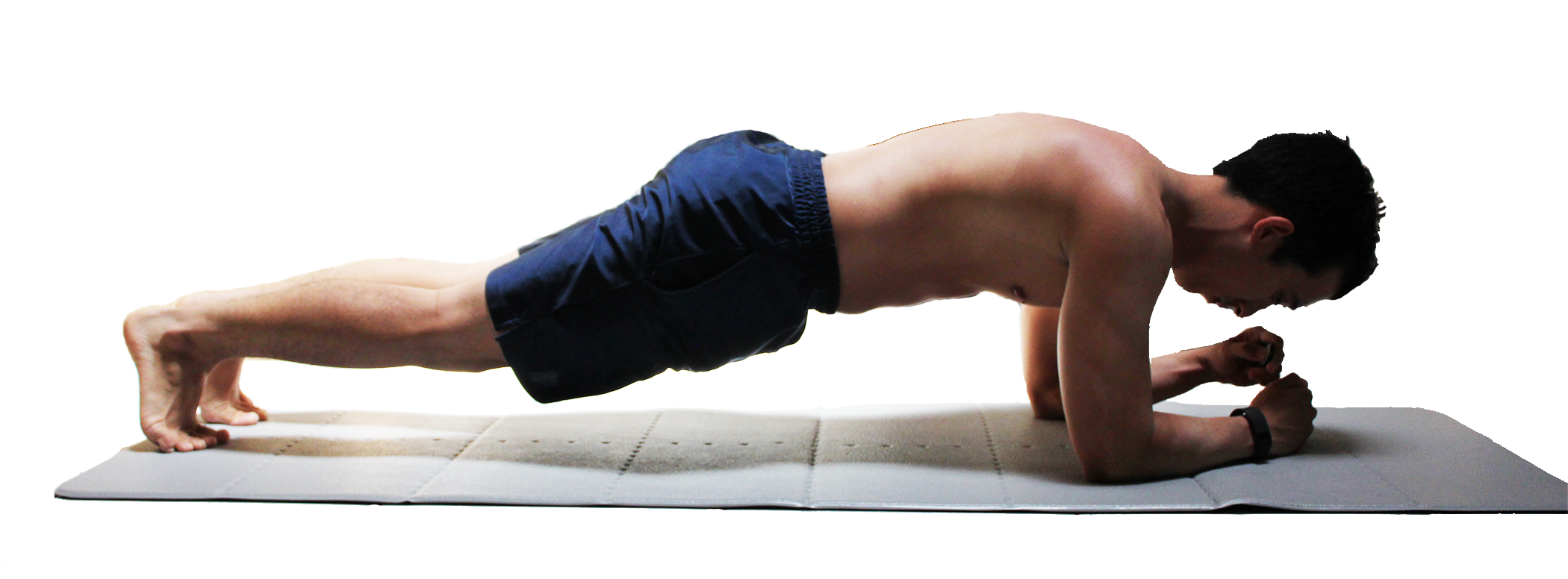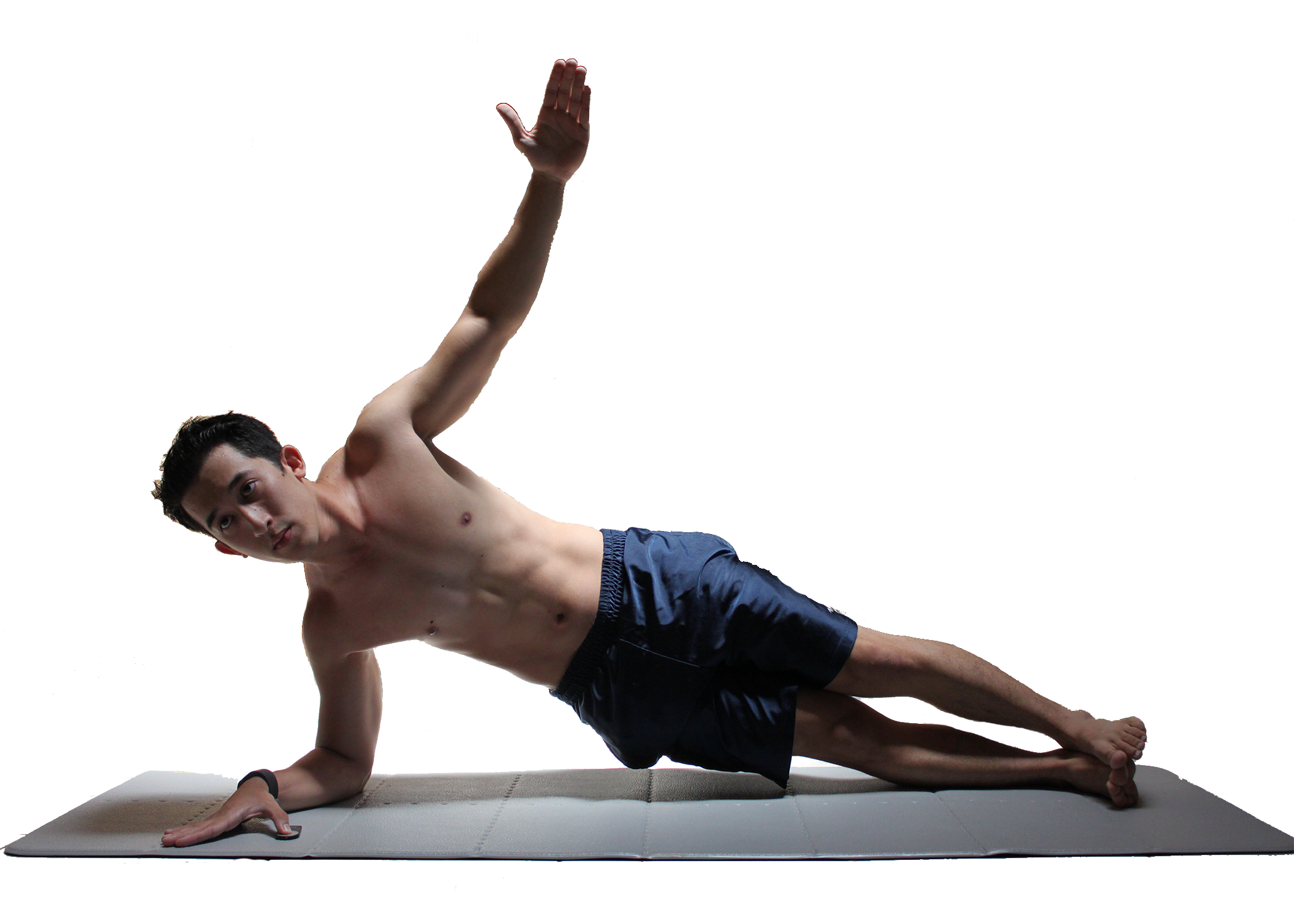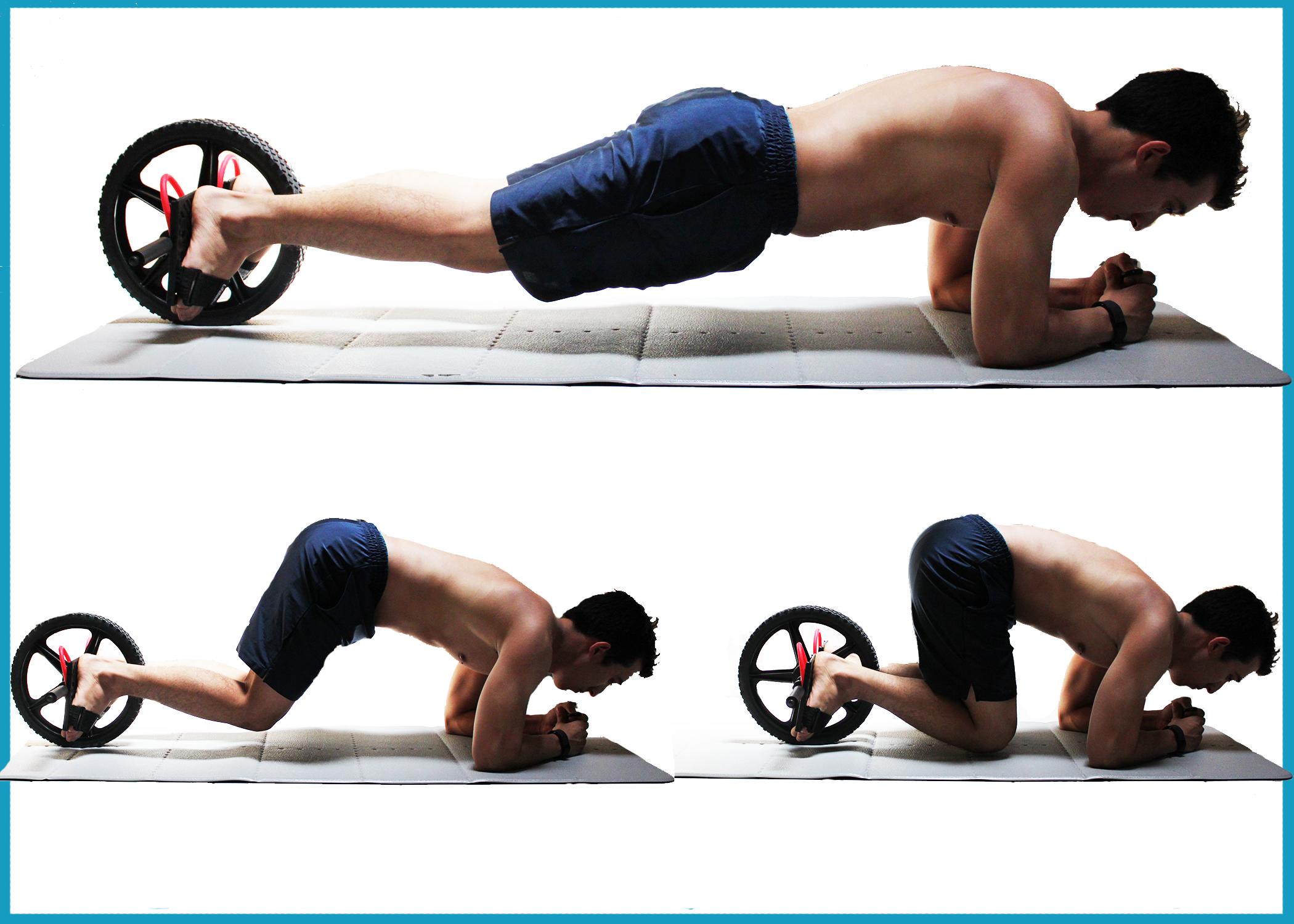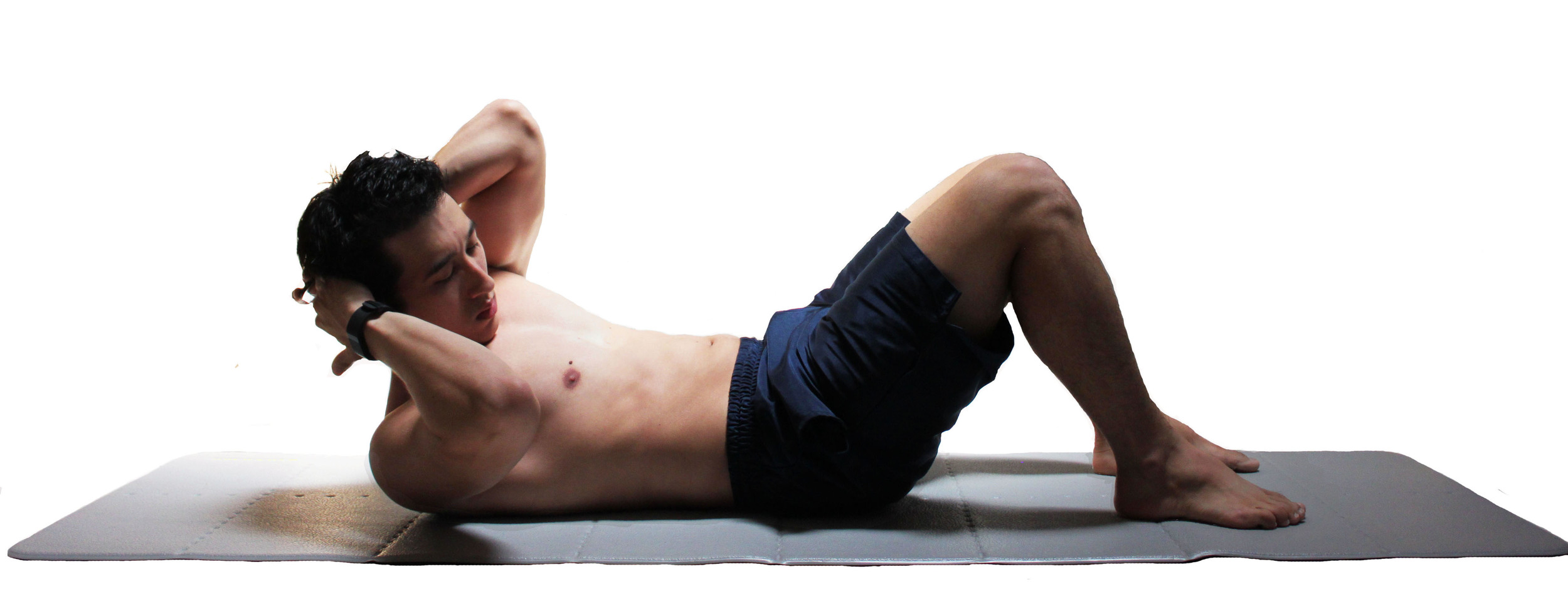Working "The Core" - Exercises With Highest EMG Activity
Written by Vinh Vuong, PT, DPT
With the summer time being here, everyone is looking to achieve his or her ideal "bod" to rock at the beaches (or lakes for people up north) to impress others. This is a journey that has started as early as last Fall or even January of this year. One of the key features everyone tries to target are the abdominal muscles. Now, in general, some individuals may assume that the 4 pairs of abdominal muscles (rectus abdominis, internal oblique, external oblique, transverse abdominis) make-up the entire "core." Or it may be believed that having a "6-pack" is essential enough for having a solid core. However, many different studies state otherwise. One brief review by Martuscello et al. claimed that the core is defined as, "the axial skeleton (which includes the pelvic girdle and shoulder girdles), and all soft tissues (i.e., articular and fibro-cartilage, ligaments, tendons, muscle, and fascia) with proximal attachment originating on the axial skeleton, regardless of whether the soft tissue terminates on the axial or appendicular skeleton (upper and lower extremities)." With that being a mouthful, another review by Jeffrey Willardson claims that the term core "has been used to refer to the trunk or more specifically the lumbopelvic region of the body." So, how exactly do we define "core?" As simply stated by the Webster dictionary: "a central and often foundational part usually distinct from the enveloping part by a difference in nature." With that being said, there may be many different variations of the term "core" based to whom you talk to.
Regardless of what core is defined as, developing stability is the foundation for preventing potential injuries. There's the strengthening aspect, but there's also the endurance portion that plays an important role. For athletes, developing core strength is important during the preseason and in-season mesocycles while endurance is better left during the postseason and off-season mesocycles. While exercising the abdominals may be nice, it's important not to ignore the muscles that surround them. Muscles such as the glutes, psoas major/minor, hamstrings, erector spinae, rectus femoris, and even the thoracolumbar fascia may contribute to overcompensation or improper use during different activities that may lead to potential low back injuries. For example, if someone is performing standard sit-ups, it will activate the psoas major and rectus femoris (along with other muscles as well) to aid in bringing the trunk up towards the knees. Because of that activation, this may place greater lumbar intradiscal pressure and compression than compared to a crunch largely due to the increased lumbar flexion. This may cause some low back pain in individuals with concurrent pathology.
For the purpose of this write-up, most of the EMG studies that will be listed involve the rectus abdominis, internal oblique, external oblique, transversus abdominis, lattisimus dorsi, lumbar multifidi, lumbar paraspinals, and the rectus femoris. The big question is, which exercises are the best for activating these muscles and bringing you one step closer to your "beach bod"?? The real answer is... who knows! There have been many studies with different exercises and even studies that have not been performed yet. There are also a wide variety of exercises that may have more influence on the activity level of each particular muscle depending on the given task. However, most of the studies are promising with some the stereotypical "ab" exercises and other weighted exercises we encounter in our daily lives. Some of them are listed here:
| Traditional | Non-Traditional | Free weight exercises |
|---|---|---|
| •Bent-knee sit-up •Crunches •Back extension •Prone/Side Plank |
•Ab Revolutionizer (double crunch, oblique crunch, reverse crunch) •Hanging knee-up with straps •Power Wheel (pike, knee-up, roll-out) •Reverse crunch (flat vs. inclined 30 degrees |
•Squat •Deadlift •Shoulder Press •Bicep curls |
EMG Results
In the graphs, I summarized what represents the highest normalized EMG percentages based on certain exercises for particular muscle groups. Though some of the exercises listed above may not show below, this is due to low EMG percentages elicited during those activities.
Top 2-3 Exercises that exhibited highest % Maxiumal voluntary isometric contraction (Mvic) per muscle group
Generalized summary of highest to low emg activity for different exercises on the particular muscle
Discussion
As a whole, it's difficult to compare each and every one of these exercises with one another because they were not from the same study. There's also the limitation of the strength of evidence these EMG studies, which can lead to bias. Though some of the exercises rank higher than others, it's important to always take a look at the bigger picture: What are the goals for strengthening/stabilizing? Is there pain that will prevent the performance of these exercise? Are you performing these with correct form? Despite these results only coming from a couple studies, there may be even more studies that were overlooked. There could also be studies currently in the process looking at different exercises comparing different muscle groups. There definitely needs to be more research done when comparing some of these exercises with other individuals who are not just healthy, but may also have low back pain.
Clinical Relevance
So, how are any of these exercises beneficial or what's the point of the data above? As a therapist, it's important to understand which "core" exercises work best with each individual patient based on their clinical symptoms. A stenotic patient may benefit from a Power Wheel Pike, rotational oblique crunch, supine marching progression, or maybe just your basic core stability on a therapy ball. There may be a herniated disc patient who presents with aggravating symptoms due to lumbar flexion that may benefit from a more neutral spine exercise such as a plank or the good ole supine "bring your belly button down to your spine" exercise. There are many ways to perform these exercises and sometimes it helps to think outside the box to provide what is appropriate or challenging for the patient (e.g. knee planks > toe plank > single leg plank > bird dog plank > etc.). In any event, these exercises, along with others, can play a vital role for obtaining a solid foundation for our "core" in regards to stability, dynamic mobility, and overall well-being. The bottom line with any exercise is having correct form! What is a house without the foundation? What is looking good while working out without performing it correctly?
My Personal Favorites
I know there are hundreds of variations to perform exercises that activate different abdominals and many reasons to choose one over the other (e.g. back pain). However, here are a few that I enjoy performing during my workout routine and recommend others to try! While using the Power Wheel, just be cognizant of your own abilities. If there are any shoulder issues, then I do not recommend using the wheel (especially while performing the roll-out) as it may cause further injury. If you want cues on how to perform these exercises correctly, leave a comment below or message me directly and I'll be happy to assist!
As something to think about for future studies and discussion: Is it relevant or necessary that an exercise get maximal EMG activity or should we focus more on motor patterns for function? Let us know what you think!
References
- Biem GM, Giraldo JL, Pincivero DM, Borror MJ, Fu FH. Abdominal Strengthening Exercises: A Comparative EMG Study. Journal of Sports Rehabilitation. 1997:6:11-20.
- Escamilla RF, Babb E, Dewitt R, et al. Electromyographic analysis of traditional and nontraditional abdominal exercises: implications for rehabilitation and training. Phys Ther. 2006;86(5):656-71.
- Martuscello JM, Nuzzo JL, Ashley CD, Campbell BI, Orriola JJ, Myer JM. Systematic review of core muscle activity during physical fitness exercises. Journal of Strength and Conditioning Research. 2013:1684-1698.
- Willardson JM. CORE STABILITY TRAINING: APPLICATIONS TO SPORTS CONDITIONING PROGRAMS. Journal of Strength and Conditioning Research. 2007:979-985.












